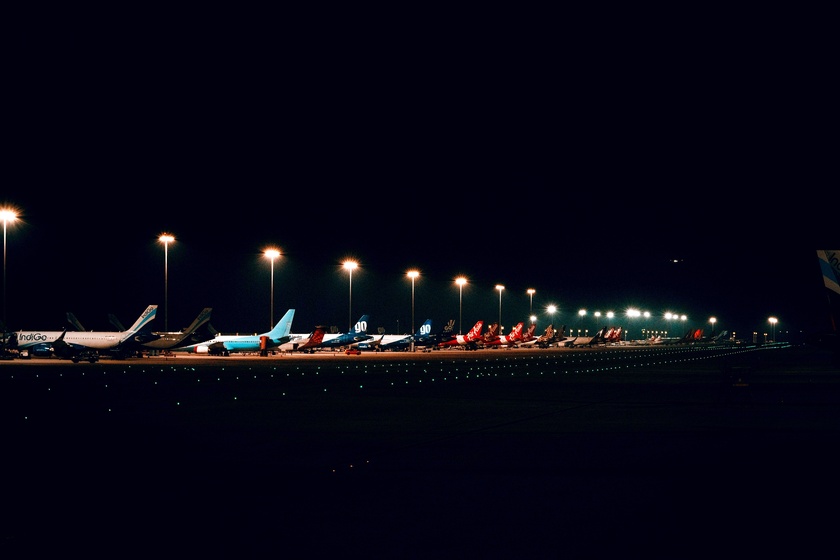
Lately, there's been a lot of talks about central bank digital currency (CBDC). So much so That last week in our article.‘Central Bank Digital Currencies: Net Positive For Aviation?’ We ask whether or not this would be a net positive for the aviation industry, and share some insights into the argument against central bank digital currencies (CBDCs).
According to the U.S. Federal Reserve (Fed):
CBDC is generally defined as a digital liability of a central bank that is widely available to the general public. Today in the United States, Federal Reserve notes (i.e., physical currency) are the only type of central bank money available to the general public. Like existing forms of money, a CBDC would enable the general public to make digital payments. As a liability of the Federal Reserve, however, a CBDC would be the safest digital asset available to the general public, with no associated credit or liquidity risk.
The Fed further stated that:
The Federal Reserve Board has issued a discussion paper that examines the pros and cons of a potential U.S. CBDC. As part of this process, we sought public feedback on a range of topics related to CBDC. The Federal Reserve is committed to hearing a wide range of voices on these topics.
As we promised in last week's article, we would like to share some insights into arguments for CBDCs. It is worth noting that there is not a flood of arguments - in the private sector - for CBDCs. Most of the arguments for CBDCs are from organizations such as the world economic forum and central banks themselves.
In our article.‘Central Bank Digital Currencies: Net Positive For Aviation?’ we stated that:
On one hand, you have skeptical economists that believe that CBDCs will allow central banks to intricately control the market and allow for even greater inflation which destroys the wealth of individuals. This is vitally important for individuals operating within the aviation industry since inflation and economic shocks will affect us in this industry more severely than many others. On the other hand, there is an argument that states with CBDCs will allow their central banks to be better able to curtail economic shocks. If true, this would benefit the aviation industry by reducing or eliminating economic shocks throughout the economy which in turn will be a net positive for the aviation industry since it is so sensitive to these shocks.
In last week's article, we laid out the arguments against CBDCs. As promised, in this week's article we would like to lay out an argument for CBDCs. As always, we expect you, our astute readers, to read both sides of the argument, think for yourselves, and come up with your own conclusion.
For more readings on economic challenges and the aviation industry, please see also: ‘3 Ways Aviation Businesses Are Coping With Inflation’, ‘The Aviation Industry and Economic Uncertainties’, ‘Inflation: Higher costs and their effects on Flight Schools’, ‘High Interest Rates/Cost of Borrowing and Their Effects on Aviation Businesses’,’Debt: Its effects on the Aviation Industry’, ‘Economic Crisis and the Aviation Industry’, ‘Inflation and Aviation’, ‘How The Aviation Industry Needs To Look At Inflation’, ‘The Aviation Industry Must Not Mistake A Recession’, ‘Understanding Recessions’, ‘Understanding Inflation’, ‘Money and Recessions.’, ‘Breaking Down Inflation.’ , ‘Inflation: Here we go again...’’, ‘Recession: Should we still be concerned?’, ‘Stagflation: Should the Aviation Industry be Concerned?’ ‘Aviation: Producer and Consumer Prices’, ‘Aviation: Are We In BIG Trouble?’, ‘Aviation: Recession Red Flags?’, ‘Aviation, Pay Attention To The ‘Canary In The Coal Mine’’, and Central Bank Digital Currencies: Net Positive For Aviation?’
What is a central bank digital currency?
Digital currency is simply electronic, rather than physical, money.
Central bank digital currencies are digital versions of a country’s physical currency – for example, a digital dollar, euro, pound or yuan.
This means “£10 of a UK digital currency would always be worth the same as a £10 note,” explains the Bank of England in the United Kingdom.
The central banks issuing and managing these digital currencies are national financial authorities that oversee a country’s currency, supply of money and monetary policy – like setting interest rates, which change the cost of borrowing.
How safe are central bank digital currencies?
Central bank money is “a risk-free form of money that is guaranteed by the state,” according to the European Central Bank (ECB), which expects to introduce a digital euro across its 27 member states by mid-decade.
The Bank of England explains that CBDCs – because they’re pegged to a country’s national currency – don’t have the volatility of privately issued digital currencies like Bitcoin, Ether (Ethereum) and XRP.
America’s central bank, the Federal Reserve, says that if it introduced a CBDC, it would be “the safest digital asset available to the general public, with no associated credit or liquidity risk”.

A growing number of central banks, like the European Central Bank, are exploring central bank digital currencies. Image: European Central Bank
How do central bank digital currencies work?
People are using cash less, and could use a CBDC to pay for things digitally, the Bank of England says.
They can hold the digital currency either in an account with the central bank, or as electronic tokens, the World Economic Forum explains in its Central Bank Digital Currency Policy‐Maker Toolkit. The electronic tokens could be held on mobile devices, prepaid cards or other forms of digital wallets.
Businesses and other financial institutions, like high-street banks, could also use CBDC.
A digital currency would complement, rather than replace, physical cash, according to the ECB.
Would society benefit from CBDCs?
The digital euro would be a “fast, easy and secure” way for people to make daily payments, the ECB says. It would give people more “choice about how to pay” and also increase financial inclusion.
About 1.7 billion adults globally don’t have access to a bank account, according to World Bank data. This is a barrier to reducing poverty. By making money easier and safer to access, central bank digital currencies could potentially improve financial inclusion, says the Atlantic Council, an American think tank.
The resilience of financial systems could also be boosted. If a natural disaster or the failure of a payments company made cash unavailable, aCBDC could provide a back-up, the International Monetary Fund says.
Reducing financial crime is another motivator. Cash is essentially untraceable and this helps to facilitate crime. Central bank digital currencies, on the other hand, can improve the transparency of money flows, says the Atlantic Council.
How many countries are considering central bank digital currencies?
More than 100 countries are exploring CBDCs, according to the Atlantic Council’s Central Bank Digital Currency Tracker, an interactive map tool.
Ten countries have already launched their own digital currency, including Nigeria in Africa and Jamaica in the Caribbean. The Bahamas in the West Indies was the first country in the world to roll out a national central bank digital currency, called the Sand Dollar, in October 2020. China is due to launch a CBDC in 2023. Nineteen countries in the G20 – which represents the world's largest economies – are exploring central bank digital currencies, including Japan, India, Russia and South Korea.
As mentioned above, the US and UK are researching CBDCs, but have not yet committed to introducing them.
In September 2022, the Swedish, Norwegian and Israeli central banks launched a project with the Bank for International Settlements to test international retail and remittance payments with central bank digital currencies, according to Reuters.
What successes have CBDCs had?
In the Bahamas, introducing the Sand Dollar has made it easier for people to transact money across “an otherwise vast archipelago,” says Deloitte.
The island of Jamaica, which started rolling out its JAM-DEX digital currency earlier this year, expects savings of about $7 million a year on replacing, storing and handling cash, according to the Atlantic Council’s CBDC tracker tool.
And what are the challenges of central bank digital currencies?
For Ecuador in South America, low levels of trust in the central bank led to its digital currency being cancelled three years after launch in 2017.
Challenges for central banks exploring digital currencies include potential cybersecurity threats.
With digital money, risks from counterfeiting, theft and network failure could have “more catastrophic consequences” than for cash, the World Economic Forum warns.
Another challenge is how to make central bank digital currencies widely available enough in a country to ensure they improve – rather than worsen – financial inclusion, the Forum adds.
Countries also need to have suitable technical and legal frameworks in place before they can issue digital currencies.
_________________
Author:
Victoria Masterson is the Senior Writer, Formative Content at the World Economic Forum.
_____________________
This article was originally published on the World Economic Forum website August 2022 and updated in October 2022, with the title ‘What is a central bank digital currency?’. The views expressed are the author’s, and do not constitute an endorsement by or necessarily represent the views of On Aviation™ or its affiliates.
Thank you for reading this week's On Aviation™ full article. Do you believe CBDCs would be a net negative for the aviation industry? Please share your thoughts in the comments below and remember to continue the conversation on our Twitter and Instagram.
Orlando - On Aviation™

















